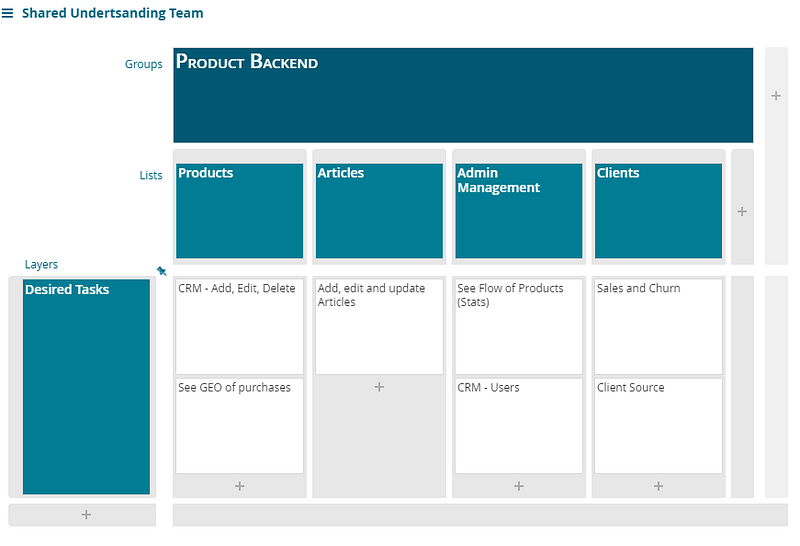When working with a large organisation it is not uncommon for everyone to picture the product from different angles, resulting in an understanding of the project or product in different ways. Story Mapping can help your team understand, bring those meetings to the digital and allow your remote working team to gain that shared understanding.
When you have multiple smaller teams come together to create a product, each team can have different requirements. This can clog up development and in some instances waste time, building the same features or two different features due to a bad understanding of the spec. These teams could be in the same office, or spread across the world. The challenge and solution is the same.
A few years ago I was assisting in the development of a now-popular mobile app. The team of designers all had different ideas on the end goal and it wasn’t until we mapped the entire user story that this was realised.

The managers wanted to see a CRM in the backend that would allow them to see the flow of products and users and to manage the support workers and content creators.
The content creators wanted to have a CRM in the backend that allowed them to edit, create and update articles and products.
The sales team wanted to have a map system that would allow users to find a product based on location.

When we put all three together we could see an conflict of understanding. Two different CRM systems and a product completely overlooked by the other teams, with overlapping cards.
Without using a FeatureMap Board, this error may have gone unnoticed for an unspecified amount of time.
Cut down your time and mismanagement, introduce a macro level understanding and make your job easier managing your team. If you are a team member, you can understand the entire project/product and figure exactly how best to utilise all talents and input.
Mapping your story helps you find holes in your thinking.
When we set out and built an entire map, it was clear that each team had a different idea. Once they were able to list each card across the map, teams merged ideas, worked on the initial idea and framed the entire product.
Once the ideas had been merged, expanded and realised, the team was able to expand their understanding to a shared understanding.

The team were then able to split up their design into a minimum viable product that successfully achieved the desired outcome.
Sadly, it was realised that months had been wasted on planning features of a project with no compatiblity with the rest of the team.
Fortunately, when creating their product on FeatureMap (even linking with remote team members across the world) they were able to hash out a new plan and deliever well within time.
Mapping your story helps with shared understanding.
When starting with FeatureMap, it doesn’t matter if you are mid project, or at the start of a new journey.
Mapping out the entire product, even at a high level macro level will help your entire team progress forward.
You can start with FeatureMap today for free, with an instant 2 week trial to access all the extra features such as aggregation, import, export, enhanced status cards and alike.

